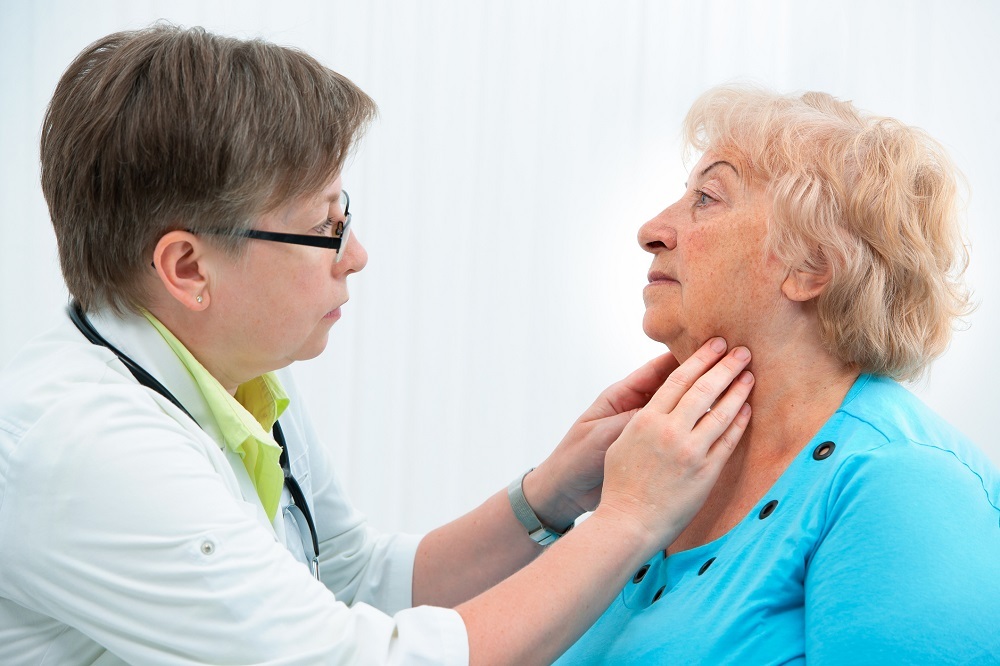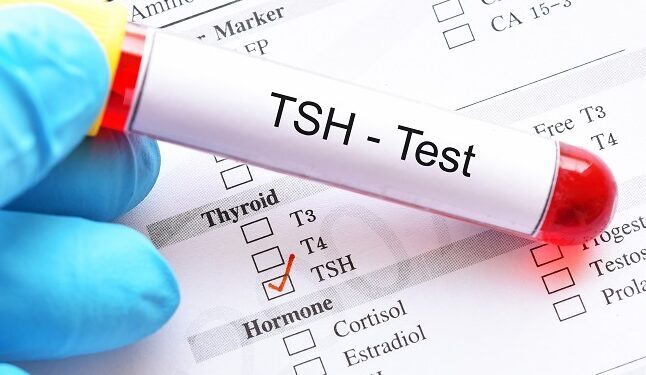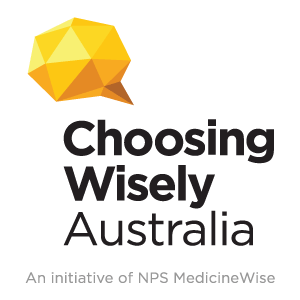Managing thyroid conditions in primary care
Finding a balance between when to test, what to test and how to treat
Key points
- Requests for thyroid tests are increasing although in many cases clinical need is not evident.
- TSH should not be used as a screening test for non-pregnant asymptomatic patients.
- Measure TSH alone as the first test for suspected thyroid disorders.
- Base repeat testing decisions on patient symptoms and other indicators, such as comorbidities, regular medicines, age, gender and TSH levels.
- Levothyroxine sodium, the new ingredient name for thyroxine sodium, is treatment of choice for hypothyroidism.
- Reserve thyroid ultrasound to assess visible or palpable thyroid nodules or goitre on clinical examination.
- Where imaging is indicated, ensure all appropriate clinical details are provided on the referral.
Practice review – Thyroid disorders: When and what to test

Australian GPs recently received a Practice Review about their requests for thyroid tests and imaging. Find out more about the Practice Review and how it helps GPs:
- reflect on their data in relation to their patients and indications for thyroid tests
- find more information to help them interpret and understand their data
- access a sample report.
- reflect on their data in relation to their patients and indications for thyroid tests
- find more information to help them interpret and understand their data
- access a sample report.
Thyroid testing algorithm for general practice
NPS MedicineWise has worked closely with leading Australian experts to prepare an easy-to-follow algorithm that supports best practice decisions when investigating suspected thyroid disorders in adults. The algorithm has been endorsed by the Endocrine Society of Australia.
Developed based on 2017 Royal College of Pathologists of Australasia. Position statement: Thyroid function testing for adult diagnosis and monitoring, with input from experts: Associate Professor Shane Hamblin, Melbourne and Professor Rita Horvath, Sydney.
Medicinewise News: Thyroid disease: challenges in primary care

Thyroid dysfunction is common, but thyroid testing should only be requested after a detailed clinical history and targeted physical examination have suggested thyroid problems.
Thyroid conditions: test, treat, refer?

Thyroid conditions are a common presentation in primary care. When used appropriately, thyroid function tests can help inform management of people with thyroid diseases, and monitor response to treatment.
Supporting quality use of referrals

The information provided on an imaging or pathology request form has a direct impact on patient care and safety
Choosing Wisely Australia

Choosing Wisely Australia helps healthcare providers and consumers have important conversations about improving the quality of healthcare by reducing unnecessary and sometimes harmful tests, treatments, and procedures.
Led by Australia’s colleges, societies and associations and facilitated by NPS MedicineWise, Choosing Wisely Australia challenges the way we think about healthcare, questioning the notion 'more is always better'.
5 questions to ask your doctor or other healthcare provider is a resource that can help patients ensure they end up with the right amount of care.
See the Choosing Wisely recommendations for thyroid tests
Recommendation from the Royal Australian College of General Practitioners
Recommendations from the Endocrine Society of Australia
Australian Prescriber: Thyroid disorders in pregnancy and postpartum

Ashleigh Smith, Jade Eccles-Smith, Michael D’Emden, Karin Lust
Aust Prescr 2017;40:214-9
Thyroid dysfunction in pregnancy has consequences for mother and baby. Potential problems include pre-eclampsia, prematurity and congenital abnormality.
Thyroid testing algorithm for GPs
Guidelines
Bone and Metabolism Expert Group. Therapeutic Guidelines: Thyroid disorders.
Newly revised in June 2019, the Therapeutic Guidelines: Bone and metabolism address the diagnosis, monitoring and treatment of hypothyroidism (including subclinical presentation), hyperthyroidism (also subclinical presentation) and also discusses how to interpret thyroid test results.
For your patients
- Better Health Channel - information on common thyroid conditions and some common treatments.
- Health Direct - information on common thyroid conditions such as hyper- and hypothyroidism.
- Lab Tests Online - accurate information for consumers about pathology testing.
- The Australian Thyroid Foundation - offers support, information and education about the impact of thyroid disease and the benefits of good thyroid health.
5 Questions to ask your doctor or other healthcare provider

Choosing Wisely Australia helps healthcare providers and consumers have important conversations about improving the quality of healthcare by reducing unnecessary and sometimes harmful tests, treatments, and procedures.
Led by Australia’s colleges, societies and associations and facilitated by NPS MedicineWise, Choosing Wisely Australia challenges the way we think about healthcare, questioning the notion 'more is always better'.
5 questions to ask your doctor or other healthcare provider is a resource that can help patients ensure they end up with the right amount of care.
Testing and screening
|
References |
Summary |
|
This study based on analysis of cross-sectional data from Busselton (Western Australia) investigated whether testing TSH first, then assessing free T4 only if TSH is out of the reference range, would miss cases of hyperthyroidism or hypothyroidism. The alternative diagnostic scenario was to request both TSH and free T4 at the same time. It found that 93.0% of individuals had normal TSH and would not need further testing. Only 3.8% of individuals had a normal TSH and a free T4 outside the reference range and so would potentially be missed if testing is staggered rather than concurrent. However, in 85% of these cases, the free T4 was within 2 picomole/L of reference range limits, consistent with healthy outliers. This suggests that only about 0.57% of individuals with thyroid dysfunction would be missed by staggering TSH tests rather than measuring both TSH and free T4 at the same time. |
|
|
Screening for thyroid dysfunction in non-pregnant people without clinical symptoms is not recommended by the US Preventive Services Task Force (USPSTF). This guideline found:
|
|
|
This article assists in identifying the appropriate sequence of investigations for thyroid disorders and identifies investigations with low diagnostic yield in certain clinical contexts. |
Interventions to reduce thyroid testing
| Reference | Summary |
Zhelev Z, Abbott R, Rogers M, et al. Effectiveness of interventions to reduce ordering of thyroid function tests: a systematic review. BMJ Open 2016;6 (6):e010065. | This systematic review identified 27 studies conducted across UK/Europe, North America, Australia and new Zealand. |
Overdiagnosis
| References | Summary |
Pandeya N, McLeod DS, Balasubramaniam K, et al. Increasing thyroid cancer incidence in Queensland, Australia 1982-2008 - true increase or overdiagnosis? Clin Endocrinol (Oxf) 2016;84 (2):257-64 | This Queensland study reported an increase in thyroid cancer incidence from 2.2 per 100,000 persons in 1982 to 10·6 per 100,000 in 2008. The largest rise was seen for incident papillary thyroid cancers suggesting overdiagnosis is a factor driving the increase in incidence. However, there was also an increase in the number of more advanced-stage cancers suggesting that other factors are also driving the increase. The authors of the study suggested that lifestyle and environmental factors such as increasing obesity or increased exposure to radiation may also be playing a role. |
O'Grady TJ, Gates MA, Boscoe FP. Thyroid cancer incidence attributable to overdiagnosis in the United States 1981-2011. Int J Cancer 2015;137 (11):2664-73. | This US study using cancer registry data estimated that the proportion of incident papillary thyroid cancers attributable to overdiagnosis in 2011 was 5.5% and 45.5% in men ages 20–49 and 50 years or older, respectively. Among women aged 20-49, 41.1% of incident papillary thyroid cancers were attributable to overdiagnosis and in women 50 years or older, this rose to 60.1%. The authors estimated that overdiagnosis has resulted in an additional 82,000 incident papillary thyroid cancers that likely would never have caused any clinical symptoms. |
